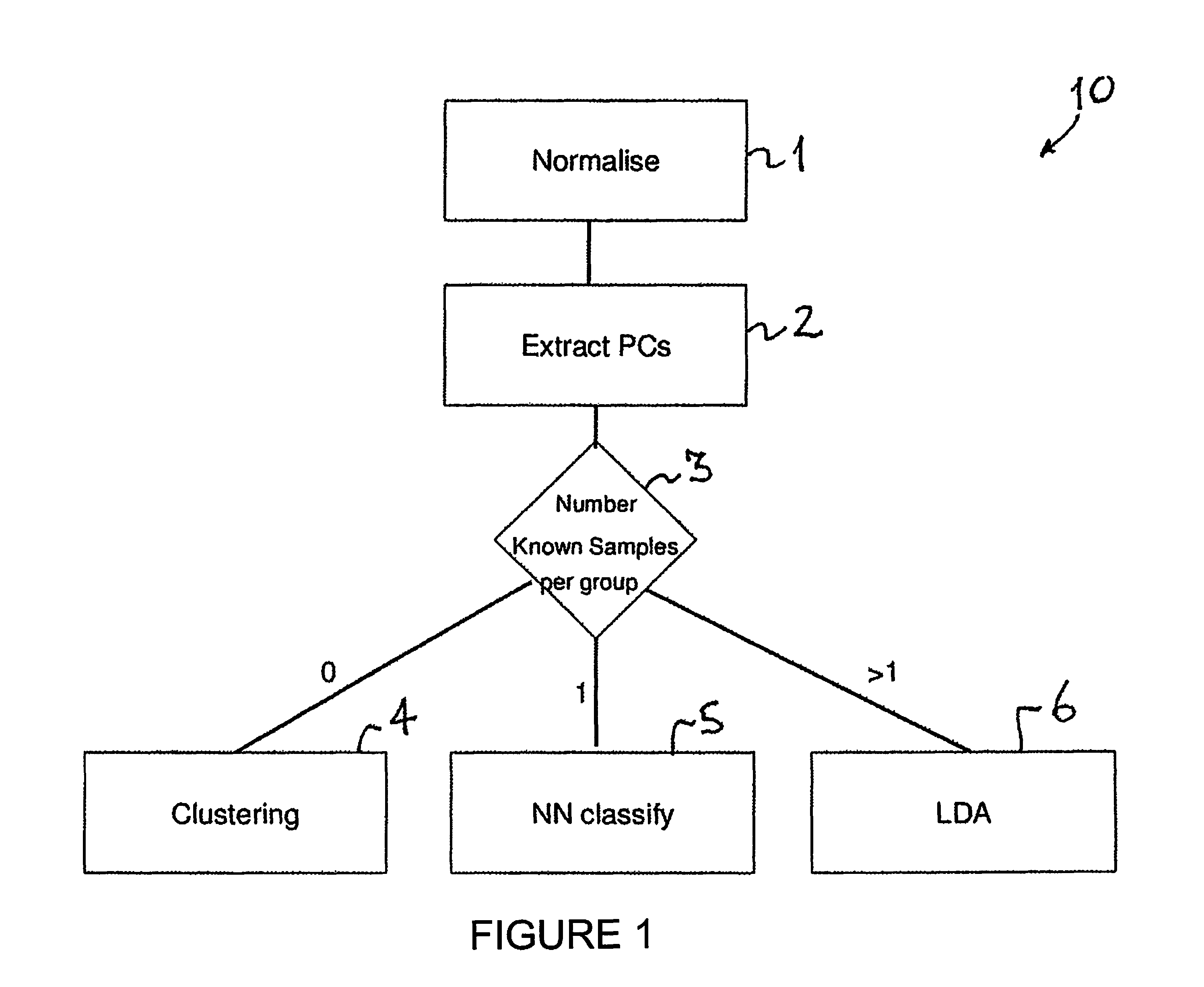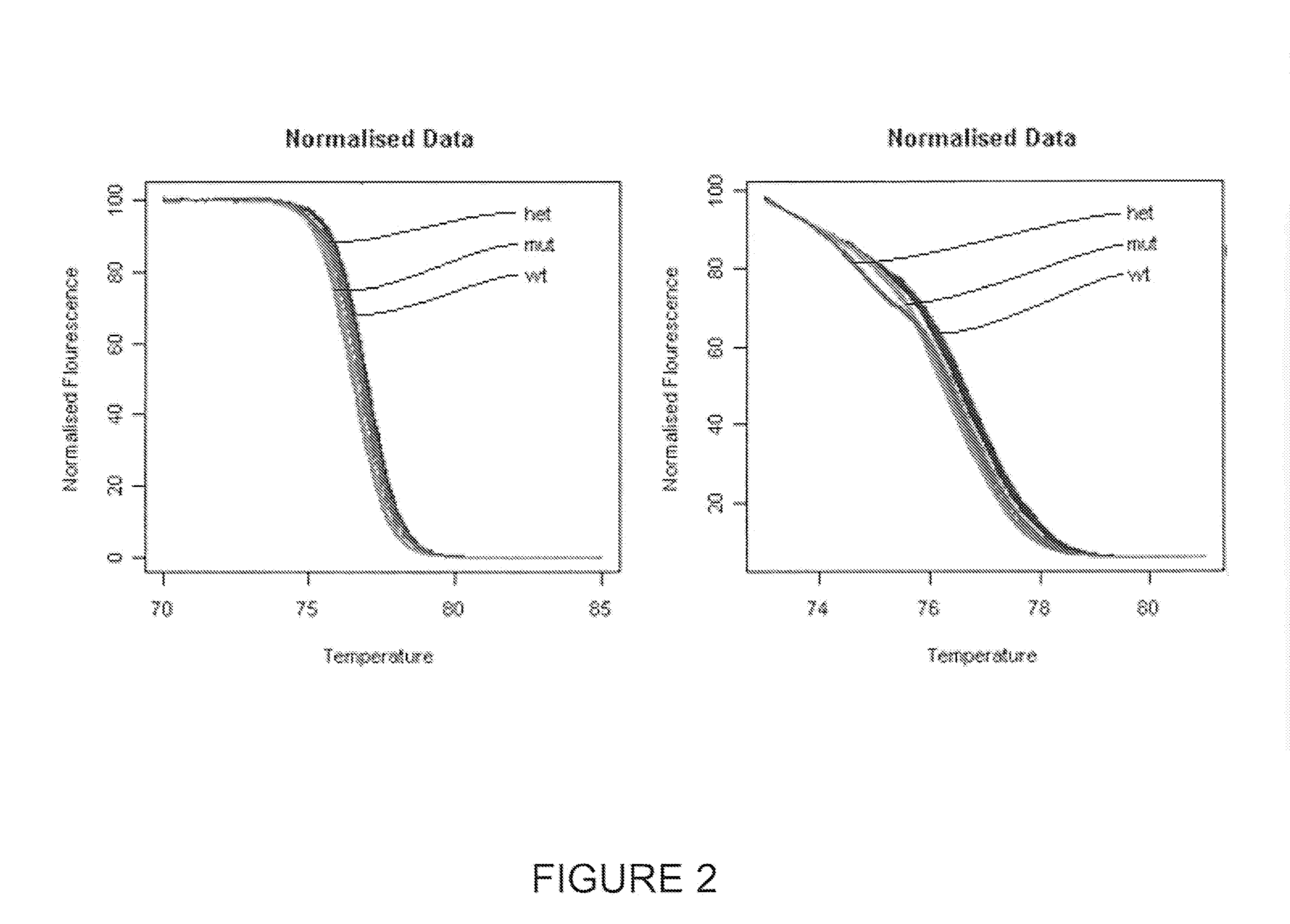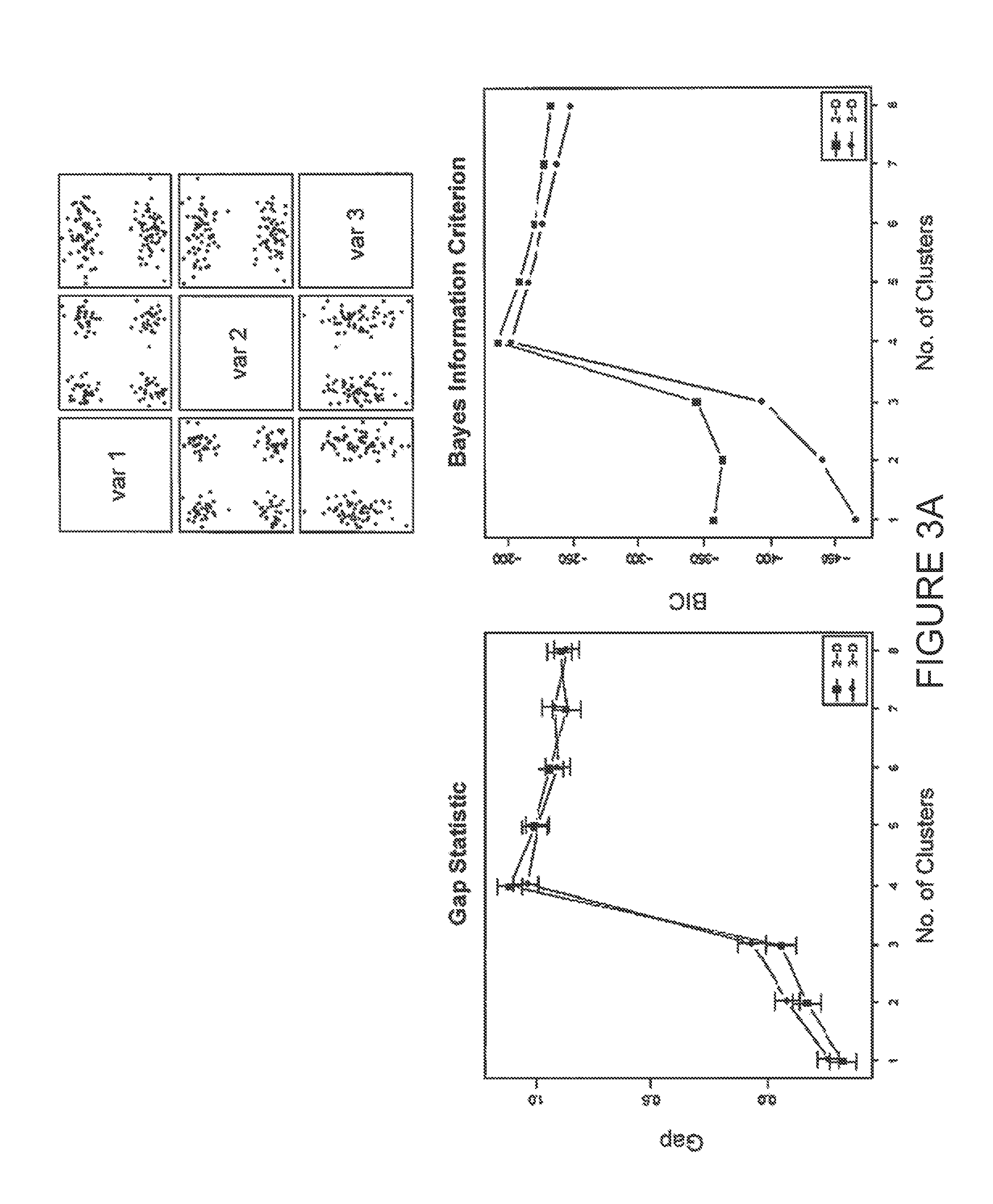Method and system for analysis of melt curves, particularly dsDNA and protein melt curves
a technology of protein melt curves and analysis methods, applied in the field of dsdna and protein melt curve analysis, can solve the problems that the analysis methods neither allow for statistical measures of each unknown, nor allow for the determination of unsupervised data sets
- Summary
- Abstract
- Description
- Claims
- Application Information
AI Technical Summary
Benefits of technology
Problems solved by technology
Method used
Image
Examples
Embodiment Construction
[0036]Various exemplary embodiments of the present invention provide a method for providing improved analysis of High Resolution DNA Melt Curves (HRM), a computer program for performing the method, and a system and apparatus for implementing the method. In one exemplary embodiment, the method comprises the following steps:[0037]melt curve parameter model fitting of HRM curves,[0038]auto-calling of HRM curves into groups defined by known cases, and[0039]de-novo clustering of HRM curves into groups.
The methodology disclosed can be utilized for use with a single run of an instrument. In one embodiment, it is therefore envisaged that up to 96 samples will be included. Various embodiments are also suitable to the analysis of data from multiple runs.
[0040]Turning initially to a first exemplary embodiment of the invention, there is a flowchart of the steps 10 of the preferred embodiment shown in FIG. 1. Initially, the data is normalized 1, this is followed by a process of extracting princi...
PUM
| Property | Measurement | Unit |
|---|---|---|
| temperature | aaaaa | aaaaa |
| temperature | aaaaa | aaaaa |
| volumes | aaaaa | aaaaa |
Abstract
Description
Claims
Application Information
 Login to View More
Login to View More - R&D
- Intellectual Property
- Life Sciences
- Materials
- Tech Scout
- Unparalleled Data Quality
- Higher Quality Content
- 60% Fewer Hallucinations
Browse by: Latest US Patents, China's latest patents, Technical Efficacy Thesaurus, Application Domain, Technology Topic, Popular Technical Reports.
© 2025 PatSnap. All rights reserved.Legal|Privacy policy|Modern Slavery Act Transparency Statement|Sitemap|About US| Contact US: help@patsnap.com



